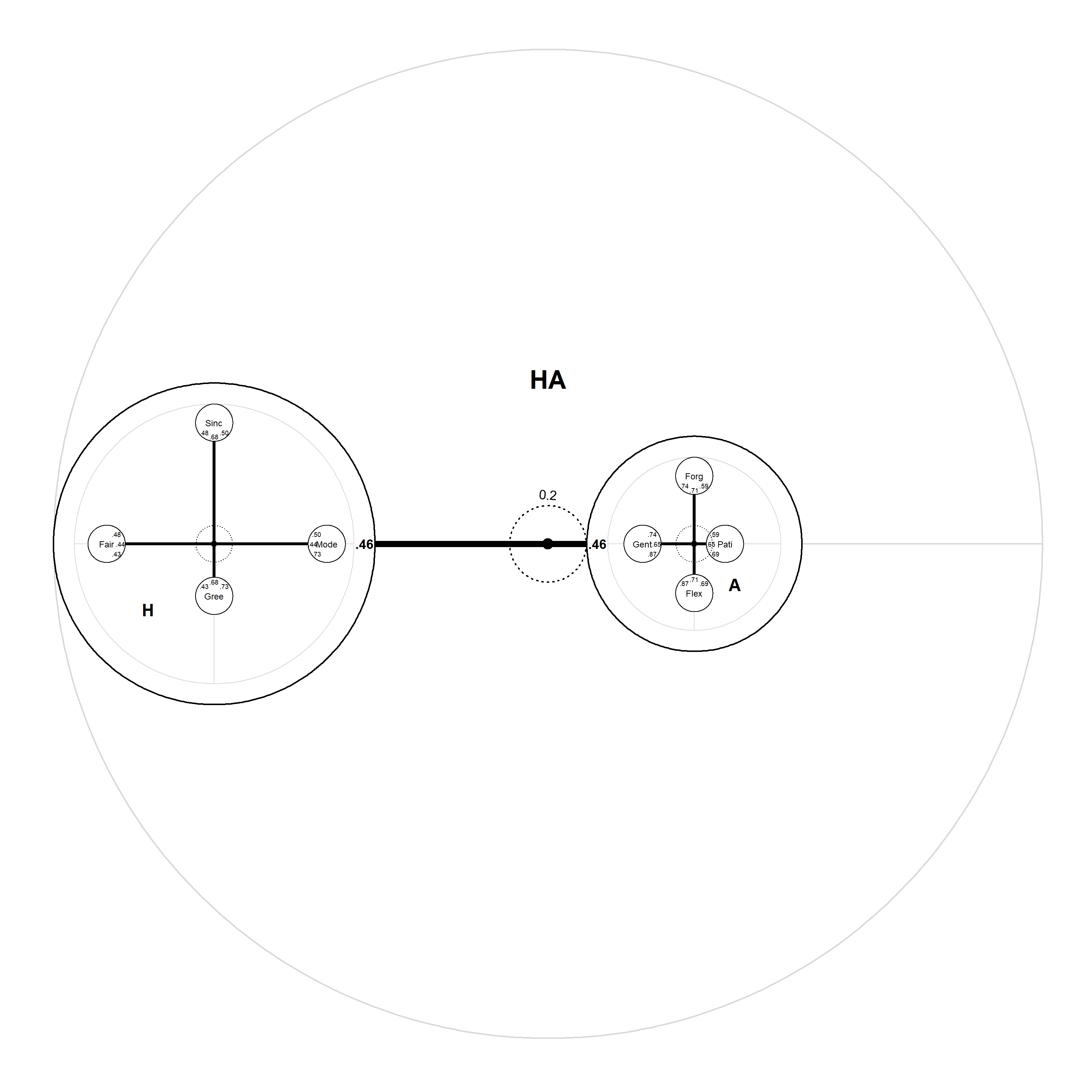
The aim of IPV is to handily create item pool visualizations, as introduced in: Dantlgraber, M., Stieger, S., & Reips, U. D. (2019). Introducing Item Pool Visualization: A method for investigation of concepts in self-reports and psychometric tests. Methodological Innovations, 12(3), 2059799119884283.
You can install the released version of IPV from CRAN by calling:
install.packages("IPV")And the development version from GitHub by calling:
# install.packages("devtools")
devtools::install_github("NilsPetras/IPV")This is an example how charts can be created:
library(IPV)
# Here, a toy example provided in the package is used.
# ?HEXACO
# estimate the underlying model from (clean) raw data
x <- ipv_est(HEXACO[ ,c(2:41, 122:161)], "HA")
#> Negative center distance adjusted to 0
#> Negative center distance adjusted to 0
#> Negative center distance adjusted to 0
# create a nested chart (one of three available chart types)
nested_chart(x$est)
#> Facet circle radius set to 0.204 based on the data.
#> cor_spacing set to 0.23 based on the data.
#> Relative scaling set to 2.1 based on the data.
#> Axis tick set to 0.2 based on the data.
#> dist_construct_label set to 0.333 based on the data.
# the next step would be to customize the appearanceFor further introduction, please check out the vignette.
browseVignettes("IPV")
#> No vignettes found by browseVignettes("IPV")When using item pool visualization, please cite:
Dantlgraber, M., Stieger, S., & Reips, U. D. (2019). Introducing Item Pool Visualization: A method for investigation of concepts in self-reports and psychometric tests. Methodological Innovations, 12(3), 2059799119884283.